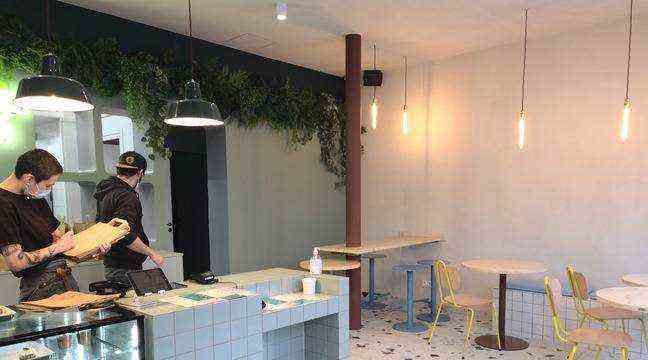It is midday, in this business district of Levallois-Perret (Hauts-de-Seine), just on the other side of the ring road. It’s lunch time. Usually, a wave of hungry employees sweeps through the shopping streets. This Thursday, rue Louise-Michel, it does not jostle. “Look around me. There is no one, ”laments Sabine, a young employee of Theory, a vegan restaurant. Since October, from her sober counter where pastries are presented, Sabine has seen few customers entering the restaurant.
She is not alone. This drop in attendance tires street traders. After two years of pandemic, the difficulties are linked. “It’s endless,” says Karine, manager of a salad bar. Its establishment, It 2 Eat, is strongly impacted by this drop in attendance, it only opens during office hours. “Before the arrival of Covid-19, my restaurant was crowded. To eat at my place, people lined up in the street, ”says Karine confused. Today, it is no longer even profitable. She has already separated from three employees since 2020. “I’ve been using my cash for months. I am at a critical point. “
Adapt to survive
The lunch break is a crucial hour for these businesses, located in business districts, where thousands of employees work. So to attract new customers, the brands are betting on delivery: “We have adapted our menu for that”, confides Tom Couture, manager of Theory. His establishment even became during the first confinement, a dark kitchen. But he and others have resumed a more traditional way of life since the restaurants reopened. This very competitive sector requires significant investments to have enough orders, declare to 20 minutes several managers. “Adapting is no longer enough,” says Karine.
Impacted by the health crisis, the daily life of employees has changed drastically. Teleworking as well as contaminations prevent them from going to the office. “A bad for a good, breathes Magali, project manager. I would rather cook at home than spend the money. “
The drop in attendance at lunchtime “will continue after the crisis”, according to a study Food Service Vision, a firm specializing in the catering sector. He estimates that, in the coming years, businesses will see a drop of at least 20%. “Consumption habits have changed too much to return to normal,” he notes. Today, delivery is legion. If teleworkers are abandoning shopping areas around their offices, it is advantageous for restaurateurs around their homes. For two years, they have observed an increase in attendance of 10%.

